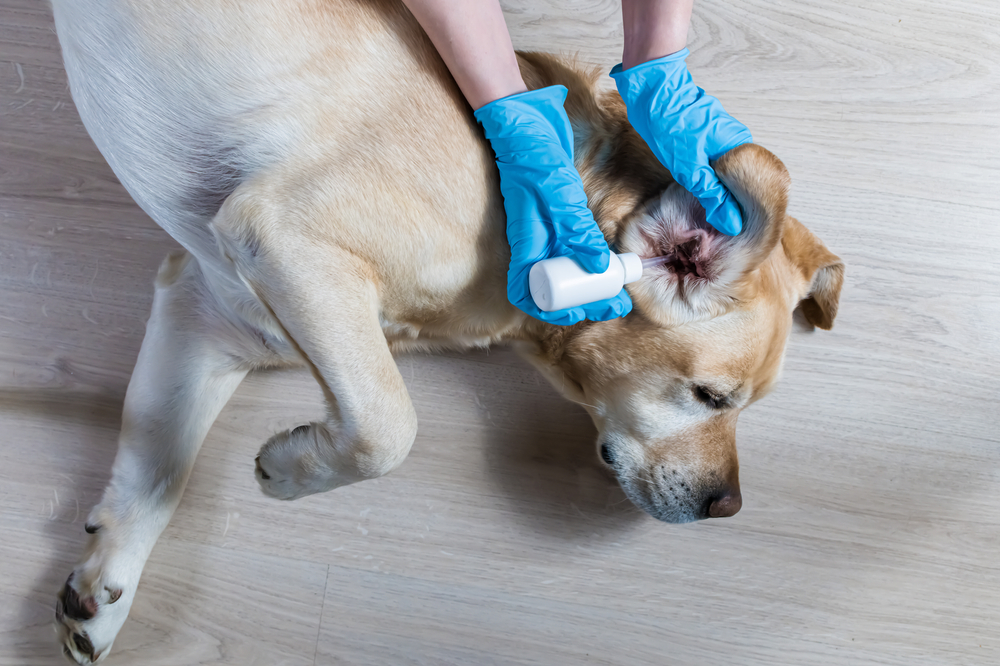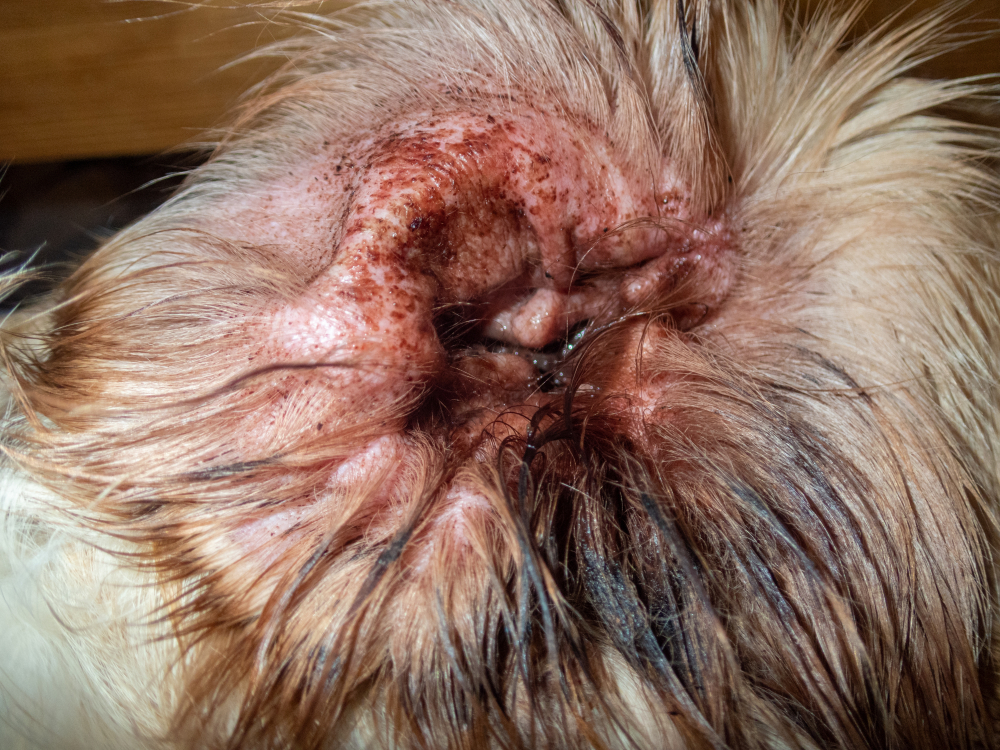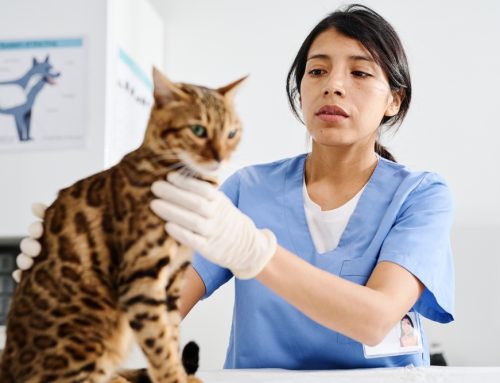A variety of factors contribute to dogs’ chronic ear infections, a common painful condition. Ear infections can cause your dog discomfort, be difficult to resolve, and if left untreated, lead to serious complications. Our Creature Comforts Veterinary Service team’s guide to chronic ear infections describes how you can help put an end to this painful health condition for your dog.
Types of ear infections in dogs
If your veterinarian suspects your dog has an ear infection, they will first determine the type. Each type of ear infection (i.e., otitis) affects a different ear part:
- Otitis externa — Develops when the outer ear canal becomes inflamed, and is the most common ear infection type.
- Otitis media — Develops when the middle ear becomes inflamed.
- Otitis interna — Develops when the inner ear becomes inflamed, and can lead to permanent damage.
When an external ear infection spreads, otitis media and interna often develop, causing a serious condition that can result in deafness, facial paralysis, and balance issues.
Causes of ear infections in dogs
Dogs’ vertical ear canals cause dirt, debris, and moisture to become trapped inside, leading to infection. Bacteria, yeast, or a combination of both typically causes ear infections. However, many underlying conditions can cause these pathogens to grow out of control, including:
- Allergies — Allergies often lead to chronic ear infections. If your pet develops more than one ear infection in a short period, you may consider allergy testing.
- Parasites — In puppies, parasites, such as ear mites, can be an infection source.
- Foreign bodies — Grass, dirt, and debris can enter your pet’s ear canal, causing inflammation, and yeast and bacteria overgrowth.
- Hormone imbalances — Hormone imbalances weaken your pet’s immune system, predisposing them to ear infections. If your veterinarian determines your pet has a hormone condition, such as hypothyroidism, they will likely prescribe a hormone supplement.
- Tumors or polyps — Tumors and polyps can trap moisture, and excess wax accumulates. While these ear growths are usually benign, they can cause chronic irritation and inflammation.
- Physical trauma — If your pet has a wound deep in their ear, infection can develop because they may not show signs until the scratch becomes infected. Dogs especially can experience ear trauma caused by romping through wooded areas in which an errant stick scratches deep in their ear.
Ear infection signs in dogs
If your pet has chronic ear infections, you recognize their whining, scratching, and head shaking as the first signs of a problem. While some pets show no ear infection signs other than a wax buildup and discharge from the ear canal, the condition often causes significant discomfort, and affected dogs may show the following signs:
- Head shaking
- Scratching at the affected ear
- Dark-colored discharge
- Odor
- Ear canal redness and swelling
- Pain
- Itchiness
- Crusting or scabs in the ears
Dogs with an increased ear infection risk
Some dog breeds have ear characteristics that predispose them to developing ear infections. These breeds include:
- Shar-peis — Shar-peis have narrowed ear canals.
- Spaniels and hounds — These breeds have floppy ears that prevent the ear canal from drying properly.
- Poodles and poodle mixes —These breeds have excessively hairy ears that promote wax accumulation.
Dog ear infection prevention
You can help prevent your pet from developing ear infections through proper care. Follow these tips to maintain your pet’s ear health:
- Clean your pet’s ears — Regularly clean your pet’s ears by filling both ear canals with a veterinarian-prescribed cleaning solution, and vigorously massaging the solution into the ear base. For breeds who have excessive hair growth inside their ears, wax buildup collects on the hair, and leads to infection, because the ear cannot drain adequately. Ask your veterinarian to demonstrate how to pull this ear hair, or have your pet’s groomer remove the hair during regular grooming sessions.
- Keep your pet’s ears dry — Water in the ear—heated by body temperature—becomes a fertile bacteria and fungi breeding ground. Do not pour water over your pet’s head when bathing them, and prevent moisture from entering deep in the ear canal. If your pet has been swimming or in the rain, towel dry the inner ear, or use cotton balls to remove excess moisture.
- Check for foreign objects — Ensure your pet’s ears are free of debris by checking them after your furry friend has been outside. Look for seeds or other foreign matter that could migrate down their ear canals and lead to infection.
Treatment for ear infections in dogs

Because underlying issues often cause ear infections in dogs, schedule an appointment as soon as your dog displays discomfort signs so your veterinarian can diagnose their condition, and prescribe appropriate treatment. Ear infection treatment varies based on the cause, and may include antibiotics, antifungals, and antimite medications that are usually applied to the ear. If your pet’s infection has advanced to their inner ear, your veterinarian may prescribe oral medications.
Chronic ear infections cause dogs discomfort, and can make their owners feel helpless and frustrated, but treatment is available to reduce this painful condition’s length and severity. If your pet shows ear infection signs, contact our Creature Comforts Veterinary Service team so we can diagnose and treat the condition, and help your pet feel their best.







Leave A Comment